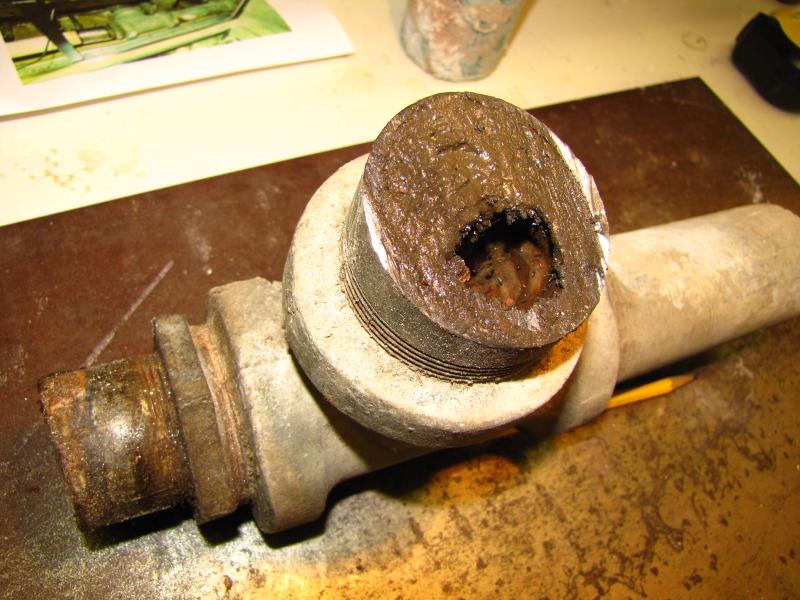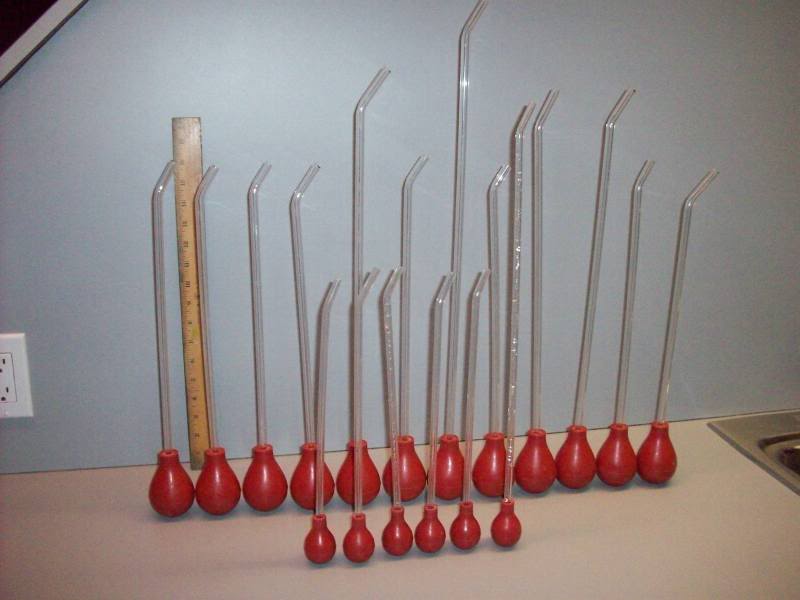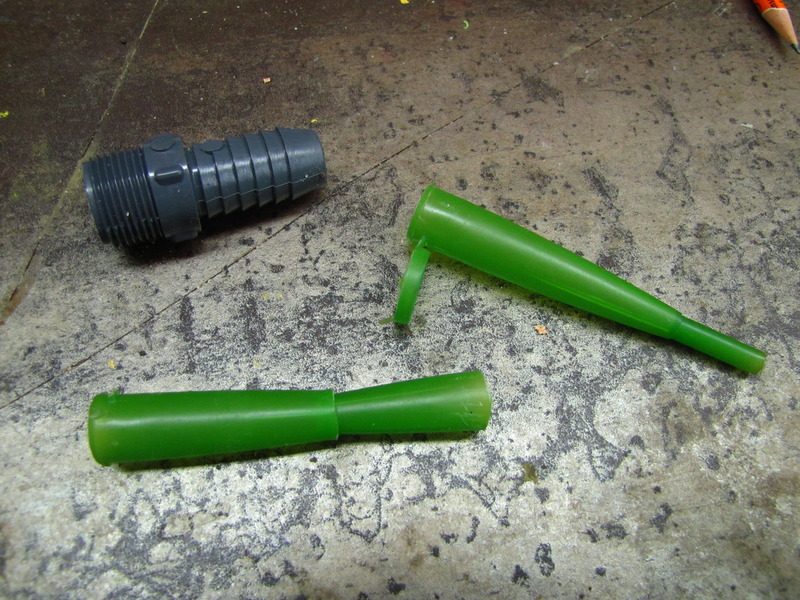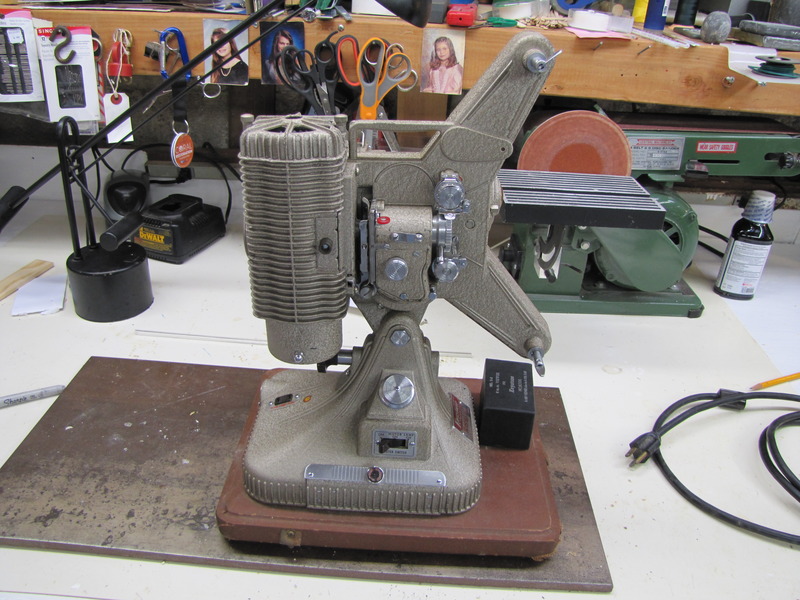That is great. I don't think those things have a life span. Mine signed up yesterday for Social Security. 
Navigation
Install the app
How to install the app on iOS
Follow along with the video below to see how to install our site as a web app on your home screen.
Note: This feature may not be available in some browsers.
More options
You are using an out of date browser. It may not display this or other websites correctly.
You should upgrade or use an alternative browser.
You should upgrade or use an alternative browser.
Old tank syndrome is vanquished in reefing now
- Thread starter brandon429
- Start date
- Tagged users None
I do agree with much of what has been said in this thread regarding OTS. However, since a relatively small percentage of reef aquariums reach even the 10 year mark, I'd say that many reef keepers would consider these long lived outliers as 'just plain lucky'.
What I have noted over the years is that it's an uphill battle when proclaiming that regular waste removal is an all important long-term strategy when decades of advice in this hobby has centered around the mantra of 'don't touch anything' (sand bed, especially). The notion of doing nothing to the system has been reinforced by a few larger old aquariums where the aquarist proclaims that he 'does nothing' (or close to it) in regards to waste export for his 20 or 30 year old system. So now you have two extremes, with polar opposite methodologies, but long term success by both. No wonder people get confused!
IMO, based on all the systems I've seen, the best that we can say is that one is 'much more likely to have long term success' with at least some regular waste export (however that is accomplished)..
What I have noted over the years is that it's an uphill battle when proclaiming that regular waste removal is an all important long-term strategy when decades of advice in this hobby has centered around the mantra of 'don't touch anything' (sand bed, especially). The notion of doing nothing to the system has been reinforced by a few larger old aquariums where the aquarist proclaims that he 'does nothing' (or close to it) in regards to waste export for his 20 or 30 year old system. So now you have two extremes, with polar opposite methodologies, but long term success by both. No wonder people get confused!
IMO, based on all the systems I've seen, the best that we can say is that one is 'much more likely to have long term success' with at least some regular waste export (however that is accomplished)..
Last edited:
In fifteen years of online posting i always agree with your take Ralph.
Also factoring heavily into the agreement: owns an old nano. You sit on the board of old nano owners.
Also factoring heavily into the agreement: owns an old nano. You sit on the board of old nano owners.
So does Maritza the vase reef but one catch: has a zero solid waste output design and no whole particle export for eight years, breaks all common rules. It's why there's room for outliers above, replication is what the masses seek and that artform isn't mass available yet i guess
In finding ways to reduce all possible reefkeeping methods one could select to try into best most safest practices, the approach that is low on waste, high in feed and active export before that feed breaks down into dissolved waste will live the longest producing corals invasion free
In finding ways to reduce all possible reefkeeping methods one could select to try into best most safest practices, the approach that is low on waste, high in feed and active export before that feed breaks down into dissolved waste will live the longest producing corals invasion free
Do you want to know how to keep a tank going for twenty years? Never unplug the power! Just keep it running. My tank has been a fowlr, a mixed reef, back to a fowlr, an sps reef, back to a fowlr, and an sps reef again. At one point I just ignored maintence for two years except feeding the few fish and top off. Didn’t clean the glass.. Then I did the partial rip clean, and bam sps packed in 18 months. Before the last rip clean it was a gha nightmare.
I hear this "lucky" thing all the time with longevity, no quarantining, medicating etc.However, since a relatively small percentage of reef aquariums reach even the 10 year mark, I'd say that many reef keepers would consider these long lived outliers as 'just plain lucky'.
I guess luck has something to do with it but IMO many people just do much of this wrong. I am very old so I can say that.
I think quarantining is the stupidest thing "us" Geezers invented along with DSBs, medicating, sand beds, bare bottom, pellets, flakes, Prizapro, carbon, Chemi Clean, bacteria in a bottle, Roaphas and a whole lot of different things. ;Yuck I would never put any of that in my tank
I also think reverse undergravel filters go a long way to eliminate OTS (When you stop laughing I will continue)
This reefing stuff is very easy but many people keep trying to make it difficult and I cringe when I read some of the things so many people do. I cringe more when I see so many fish sick and dying on the disease forum and the things we do to save them, which rarely works.
I guess I just cringe to much.
Brandon just wrote a really great thread and we should listen to it. Our tanks need very little from us but a little cleaning out of pores and under things like maybe yearly goes a long way because it is bacteria and not Supermodels that keep our tanks going with no problems and bacteria like to have nice places to live.
There are many really good reef keepers with old tanks on this and other forums, find them and do what they do. Don't follow someone who is on his 17th tank and don't look for them on the disease forum because successful reef keepers would never be there unless to give advice because for good reef keepers disease is a nothing burger.
I think some tanks are to clean and some too dirty. OK, I know I am rambling but it is snowing and I have nothing else to do.
What is happening to all the tanks that were started 10 or 20 years ago? Where did they go?
Why are tanks crashing? I just don't get it so I assume I am doing something wrong.
No, It is not the fault of the LFS, or the guy in the canoe who collected our fish, it is our fault.
Great discussion. I really appreciate the effort put out to find the best methods, especially in a 2nd language. The bell curve of tank life was a good mind picture. You also don't say your method is the only way anyone has ever kept a long-term tank, but the way that will work for the most ppl.
"So now you have two extremes, with polar opposite methodologies, but long term success by both. No wonder people get confused!"
This is true!
"So now you have two extremes, with polar opposite methodologies, but long term success by both. No wonder people get confused!"
This is true!
LOL, we are all 'getting there'I hear this "lucky" thing all the time with longevity, no quarantining, medicating etc.
I guess luck has something to do with it but IMO many people just do much of this wrong. I am very old so I can say that.
After a post for my small nano's 11th or 12th year, I distinctly remember a poster asking for the 'magic secret'. Attempted witty comment from me was 'Hogwart's Magic Wand' or something like that. But this one comment got me really thinking about the 'just lucky' opinion that seems to be common in this hobby and how it affects reef keeping efforts. It's hard to deny that what we call luck does play a role, but thinking that 'that's all there is to it' can stop people from analyzing and critically thinking about all the other factors that go into running a successful system long term.
Personally, I'd be thrilled to see a lot more large (and especially small) systems that run for a decade or much more. But in reality, life's events (moving, illness, divorce/separation, job loss, depression/loss of interest, upgrade-itis, etc., etc.) often conspire to make long lived systems more of an anomaly, rather than the norm.
Here is a picture of a 20 year old Southdown Tropical Play sand DSB set up on a 120 gal FOWLR. I did have some success with keeping some soft corals alive and growing about 10 years ago. I occasionally had sand stirrers like a big damsel and a conch or two throughout the years.
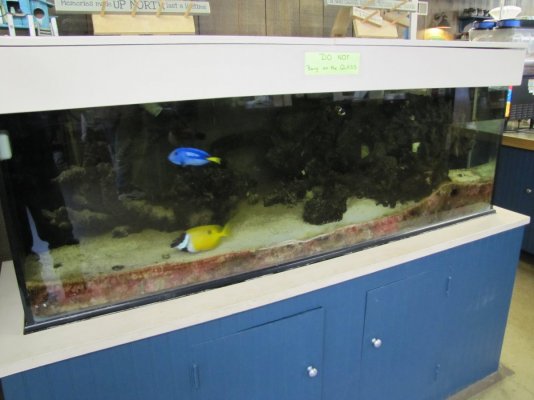
Nitrate were getting up around 50ppm, phos was .1ppm
This was a hands off set up until about a year ago when I started to gravel vac the sand. I was getting lots off detritus build up on the surface.
I tore this tank apart a couple weeks ago and was amazed at how clean the sand was. I fully expected it to smell and look like a nasty clam flat. It smelled like the sea and didn't have any nasty dark areas in the sand...save for what you see on the front glass. There were back areas of this tank I could never access with a gravel vac. There were worms in the sand bed, but it wasn't teeming with life.
I just thought I would share.

Nitrate were getting up around 50ppm, phos was .1ppm
This was a hands off set up until about a year ago when I started to gravel vac the sand. I was getting lots off detritus build up on the surface.
I tore this tank apart a couple weeks ago and was amazed at how clean the sand was. I fully expected it to smell and look like a nasty clam flat. It smelled like the sea and didn't have any nasty dark areas in the sand...save for what you see on the front glass. There were back areas of this tank I could never access with a gravel vac. There were worms in the sand bed, but it wasn't teeming with life.
I just thought I would share.
I have always cleaned my sand for as long as I can remember... even before it was cool. I never understood why someone wanted to look at the nasty black and green and red sandbed line that had never been touched for years.
I have a Love-Hate relationship with at least one Diamond Watchman Goby (aka Bob The Builder) in each tank. My job is to spread the sand back to it's 1-1.5" depth and make it all purdy again. Their job is to spend days piling it all up against rocks and decor, along with burying the eel, or the puffer, or the crab or whomever holds still long enough. How often I "clean" my sandbeds is in direct correlation to how long it takes the gobies to expose a large area of glass bottom.
Does all that qualify as sand bed maintenance? I have no idea!
Does all that qualify as sand bed maintenance? I have no idea!
It's an O'Dell, went to another home with several Aquaclear 802's. We had to dismantle the overly reinforced black particle board stand that hadn't failed since the late 1900's.Great 20 year old tankI love to see that.
Those of you stirring your sand beds, would a group of nassarius and marginella snails be sufficient for the job? I ask because my sandbed seems like it is perpetually clean except for a ton of spaghetti worms. Should I be stirring more often?
Those of you stirring your sand beds, would a group of nassarius and marginella snails be sufficient for the job? I ask because my sandbed seems like it is perpetually clean except for a ton of spaghetti worms. Should I be stirring more often?
As you mentioned, your sand bed is clean. So if you pickup a handful and drop it, you don't see a big dark and nasty cloud of detritus afterward, correct?
If this is the case, and your PO4 and NO3 are within recommended reef keeping levels, then I'd say that whatever is going on in your system is 'all good' just as it is (IMO).
No cure for old reefer syndrome sadly.
Who needs a cure when you are as handsome as this old salt?
I'll give it a shot and see. Thanks for the reply.As you mentioned, your sand bed is clean. So if you pickup a handful and drop it, you don't see a big dark and nasty cloud of detritus afterward, correct?
If this is the case, and your PO4 and NO3 are within recommended reef keeping levels, then I'd say that whatever is going on in your system is 'all good' just as it is (IMO).
In building my 140 gallon tank and fish room I wanted the rock setting on a grate with a large sand bed in the fish room. I am sure stuff will collect under the grate but I just figured it will be easier to blow it out or whatever if the rock were not on the bottom with sand around it. I know it is an experiment so we will see.I too use sand, bare bottom looks too empty.
mine is neglected two years not cleaned, then just catch up rip cleaned or all new sand. Agreed many ways to manage as long as we aren’t hands-offing
right on the down slope of the bell curve I use a rip clean to move me back to the other upside of the bell curve.
Over and over, as long as I’m alive to reef this one single system will be flipped from eutrophic to oligotrophic at my whim.
the old rules simply tried to slow the original bell curve vs reset it indefinitely. They didn’t understand cycling well enough to know that certain methods of cleaning don’t reset the cycle bacteria. They had to be hands off by default for safety, fear of bacteria loss rules all old reefing tactical manuals
stick stirring for prevention is ideal too agreed. Feeds corals a little bit in the process and exposes waste for export in flosses etc
The grate is mostly hidden because the display window in the fish room is raised about 2 inches. I have the largest Trigger sump and I will start with two of the chambers devoted to a sand bed. I don't plan on a skimmer but if I have to get one I can remove the sand on one side. It is so much easier to monitor and maintain the sand if it is on the same platform as the tank where I can get to it. Plus a sink is next to the sump for ease of maintenance. I have a small reactor platform for a carbon reactor I many want to insert and use from time to time. Also, I have a place where I can put an air stone under incoming water from the tank.
My plan is to grow my biological load as my biological filter grows. That will be a challenge I know. By the way, Brandon, my Kpaquatics rock is on the way and I appreciate your help and advice on bacteria and cycling.
Paul B doesn’t want to take over the thread.. then proceeds to write The Reef Aquarium, Vol 4 by Sprung, Delbeek and Paul BBrandon, I love this. I wrote an article about it a few years ago. I don't want to crash your thread as it is kind of long.
Old Tank Syndrome
Is this a myth? Something we heard about in the deep abbesses of when the hobby started (I think it was on a Tuesday) Is this something we need to worry about. Like we don't have enough to worry about with the heartbreak of psoriasis and wondering if we will be accepted into the "Hair club for men".
I realize the vast majority of tanks crash, or for some reason fail to thrive for more than a few years. Why is that? Is it due to Old Tank Syndrome, Wikileaks, or something else?
Tanks crash for all sorts of reasons, disease (affecting the tank, or us) financing is a big one. it could be a decision to buy another nose ring or a blue legged hermit crab. It could be lack of interest, (I think that is a big one) Sometimes our spouse just doesn't want a tank, although I don't know why one would have such a spouse.
Many tanks crash due to a power failure, flood, earthquake, hair algae, cyano or my favorite RAP music.
I think I have the answer to all these problems. Noah and I used to sit on the Ark and ponder these things.
I think lack of interest is the biggest factor and probably the hardest to rectify. If you don't have any interest it is probably better if you quit and go on to other things. It is silly to keep pouring money into something that you lost your love for. Of course all of us lose interest in some parts of the hobby over time. For instance when my fish spawn for the first time, I get all excited and send out cigars. Then I sit up all night and feed and name each baby. But after that fish spawns many times, I will not get as excited, (but I will run out of names) although I will still never lose my interest as I still find it fascinating. When those things happen, I embrace other parts of the hobby like building my own rocks or spawning different fish.
Re aquascape. Don't worry about mini cycles (Whatever that is) Just remove your rock and corals and put them in a different place. It's a hobby, have fun with it. If a coral dies, better it than you. You need to keep up the interest.
Finances seems to be a big problem, but I have not found that to be a problem. Of course if you are the type of person that must have the biggest, best and most expensive new, shiny thing that comes out, you of course can go broke. My 100 gallon tank costs me $960.00 a year to keep. That is a lot of money but I spend more on pictures of Supermodels or those little plastic things on the end of my shoelaces.
I feed clams and live blackworms. The worms cost a bit but the clams are very cheap. If you live in Arizona or Utah, the clams may be a little high, I really don't know. I change water about 5 times a year. I realize a lot of people feel the need to change an ounce of water every three hours, but that is IMO not necessary unless you feed your fish a side of beef twice a day.
Rap music, I have no control of but it is not played in my house and if it was, I would wrap my tank (and my head) in bubble wrap.
Lets talk about crashing. Except for disease (which I wrote about elsewhere) the biggest cause of "Old Tank Syndrome" is caused by bacteria, or lack of them. Bacteria run our tanks and we are just here for the bacteria to make fun of, especially if we wear a Speedo near our tank. Bacteria clean the water for us for free. Changing the water can help the bacteria, but if we change it too much, it can make the bacteria mad. There is a reason new tanks with all new water are not very healthy. But, that doesn't mean we should stop changing water.
The bacteria, eventually need our help. In the sea they don't need help because someone there helps them. Mother Nature. In the sea Mother Nature provides typhoons. I also provide typhoons in my tank as much as I can. Let me explain.
The bacteria rely on surface area to do their job. They also need food in the form of nutrients and "some" but not all bacteria need oxygen. Bacteria live on all surfaces, even (unfortunately) your girlfriends nose ring. If you tried to keep fish alive in a bare tank, you would have to change the water almost daily because there is not enough room for bacteria to grow. This is also why a tank with a bare bottom can not support as many fish as a tank with gravel. It is just math. I am not too good in Math but the bacteria are great at it. The more spaces they have, the more they will multiply. They will grow on top of each other, but only up to a limit. Suppose you were to try to live like that. Think about it. Bacteria need surfaces and in our tanks, the surfaces are mostly on the substrate and the rocks. Not just on the rocks, but inside them, in the pores. The "rocks" we use in our tanks are not even real rocks. They were built by microscope creatures living on the rock. The creatures exuded this material and in the process of doing this, the "rock" was built full of pores. Inside these pores live the bacteria. The aerobic bacteria live near the surface and use the oxygen abundant there. The anaerobic bacteria live deeper in the pores and need far less, if any oxygen. I think they have larger noses to utilize the inadequate supplies of oxygen. Those are the bacteria that convert the nitrates to nitrate gas that escapes.
The problem is over time, those pores clog and those anaerobic bacteria, although can live in clogged pores, have no access to our tank water so they can't process wastes. When that happens, they can no longer do the macarana or any dance so they will die and become part of the stuff that is clogging the pores.
This is a 2" sewer pipe I removed from my house. All pores will eventually clog like this given enough time. No, Liquid Plumber will not fix this.
This is where we come in. As I said the sea has Mother Nature, but we have power filters. I use a diatom filter which is just a canister filter with a powerful pump. It also removes tiny particles much smaller than a normal canister filter but we do not need to remove particles that small. We mainly need something with a strong pump. You can use a turkey baster but that is a Sissy way to do it and most of the bacteria will just laugh at you. You may have to put your ear to the glass to hear them, but trust me, they are laughing.
I use one of these every day, mostly for target feeding but I also blow off the rocks. As I said, this is a Sissy way to do it and it won't make up for the major cleaning with the filter.
On the outflow of my power filter I install a nozzle. I make that out of one of those little green plastic things that florists put carnations in to keep them alive. You can get them from a florist for a few cents. They look like a small funnel but the hole is closed so you need to drill a hole in the small end. If there are no florists near you, move or make something else. This is not rocket science just find a way to make the end of the outflow hose smaller.
You can see those green plastic things here. I also use them to build venture valves.
This will provide a strong stream of water that you carefully aim at your exposed rock surfaces. Do not hit your corals with it unless you want to buy new corals or make soup. If your corals are moveable, lift them to get under them. Power wash all the surfaces you can and you will be amazed at how much stuff comes out of the rocks. You will also be amazed at how many things your spouse can come up for you to do instead of doing this.

In my tank I use a reverse under gravel filter (OK, stop laughing) so I can do this to my gravel, but if you have sand, be very careful. If you have a DSB, IMO your tank won't last more than ten or twelve years anyway so you are on your own, but at least do it to the rocks.
I only perform this maintenance once or twice a year and so far, after 45 years, it seems to have worked. Of course I never play Rap music especially if I am wearing my Speedo.
When you are done, you can take a video of your tank and show it to your neighbors on your projector.
Report Edit
Similar threads
- Replies
- 31
- Views
- 693
- Replies
- 15
- Views
- 252









